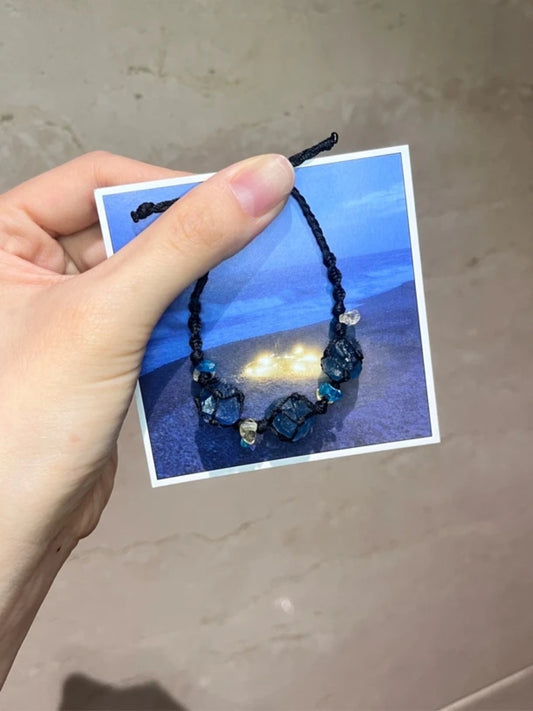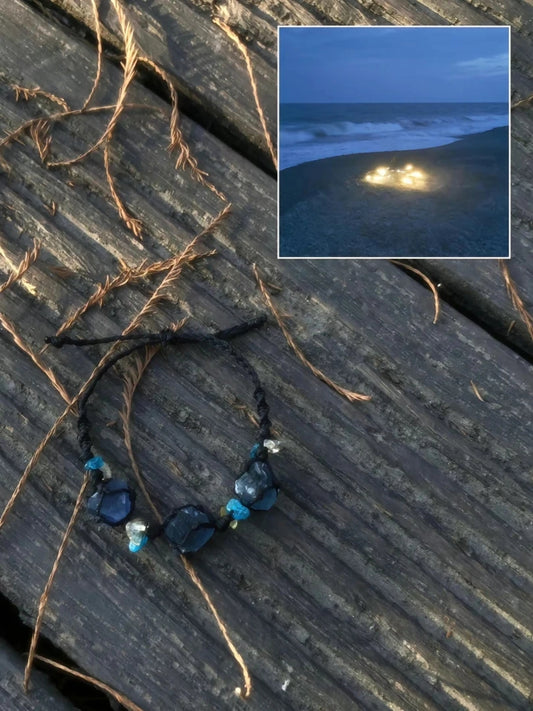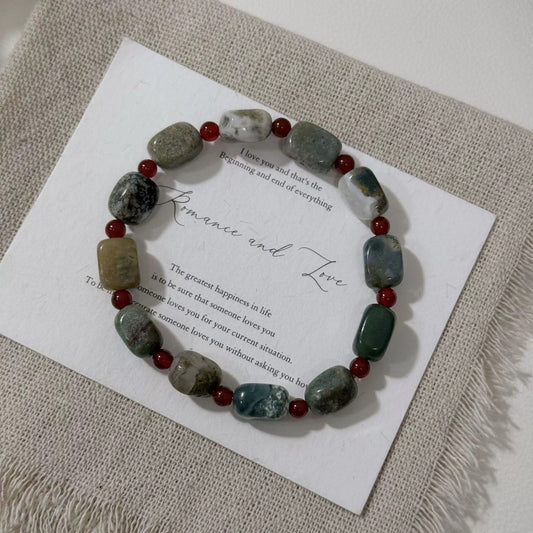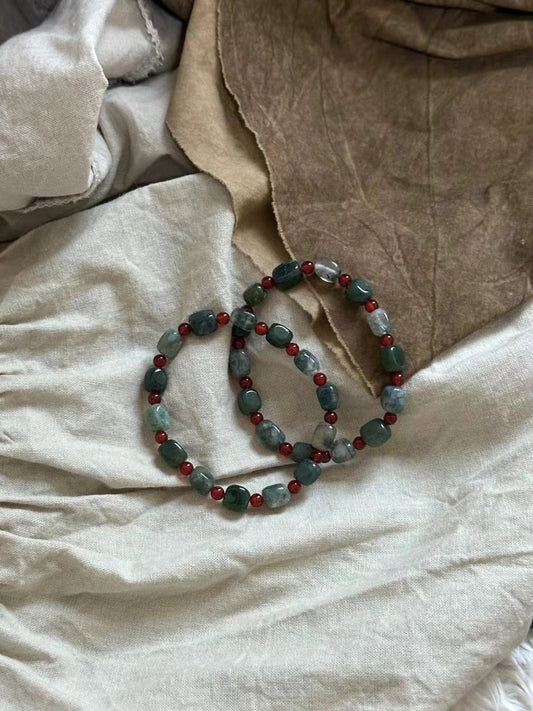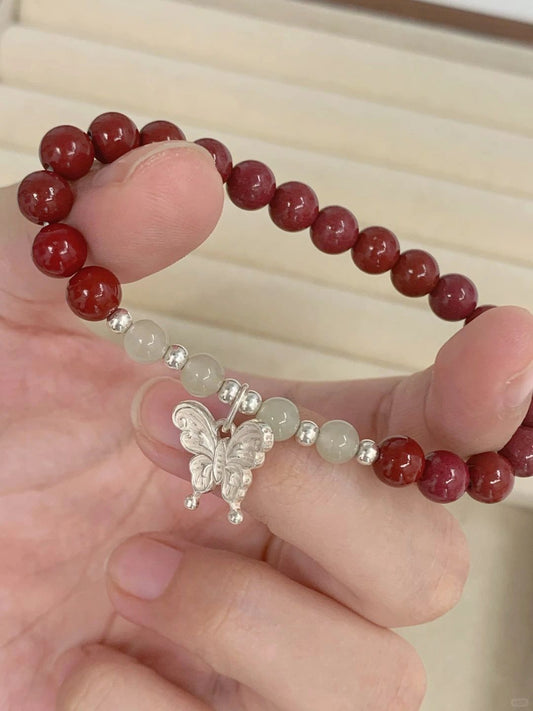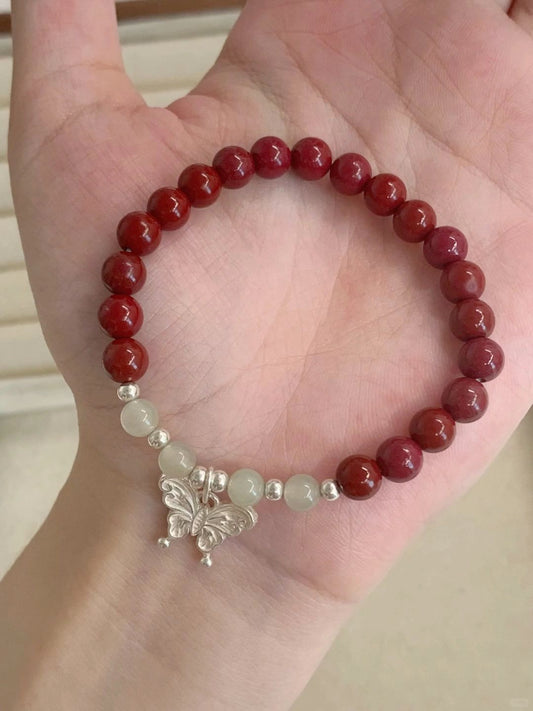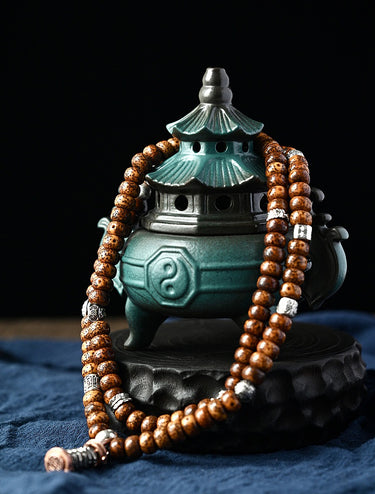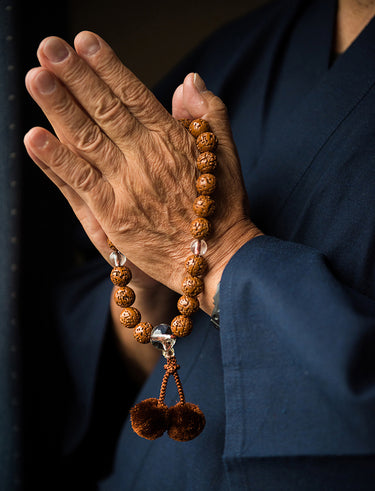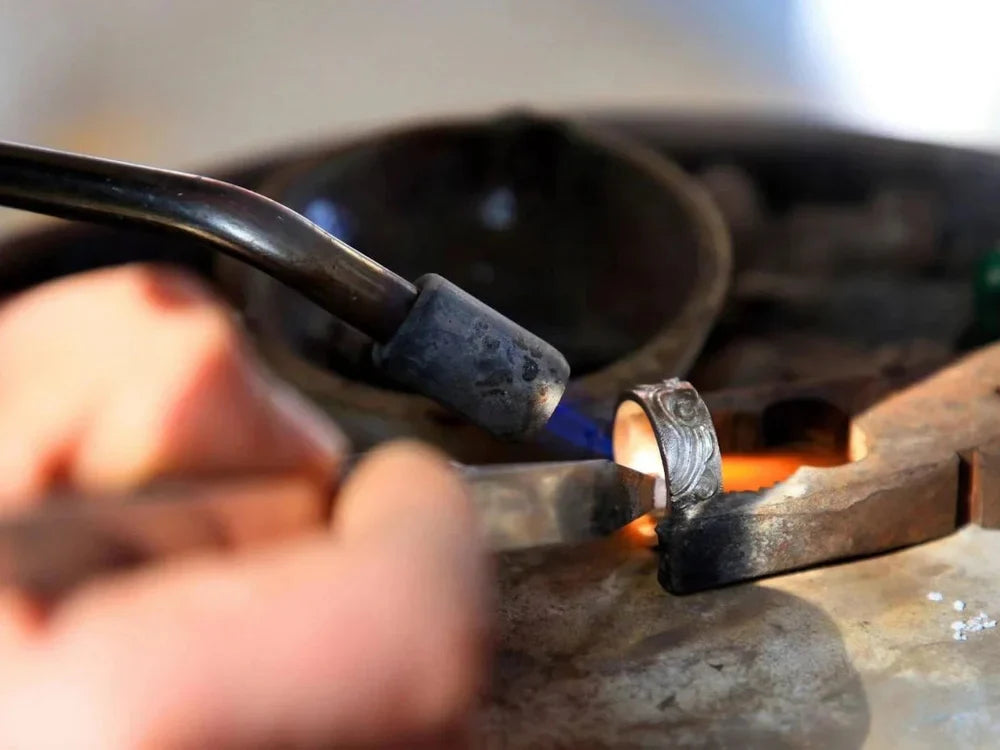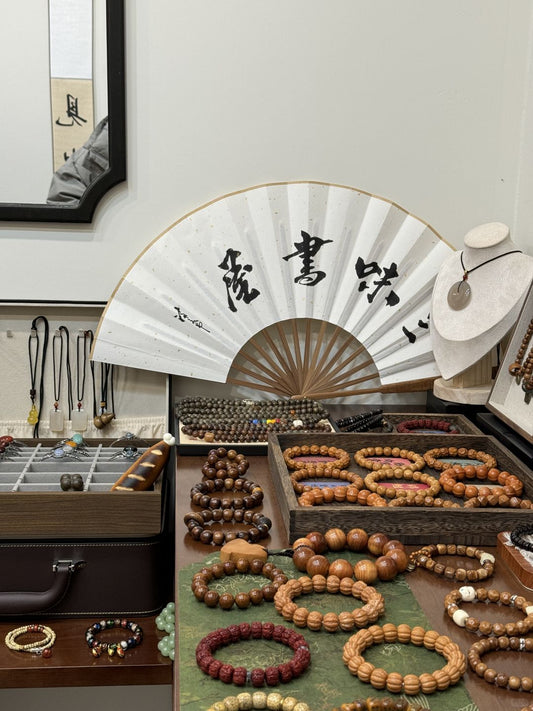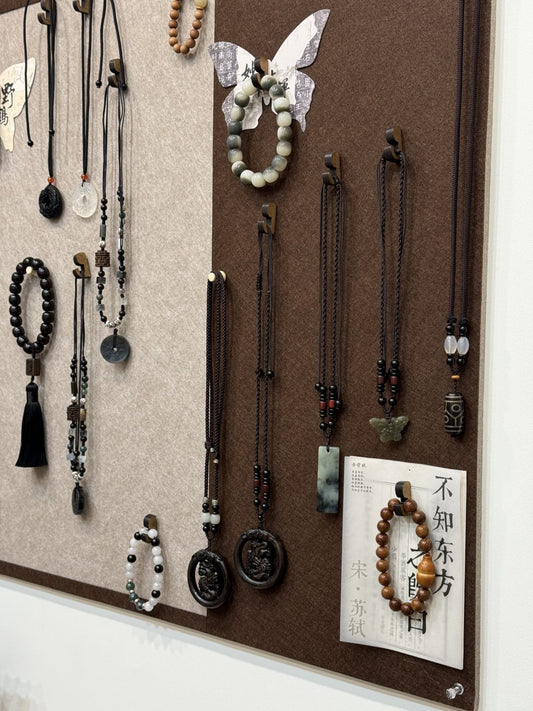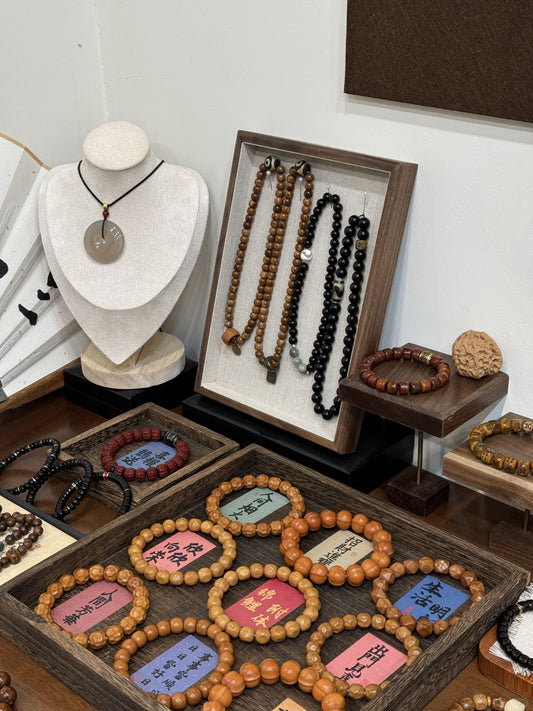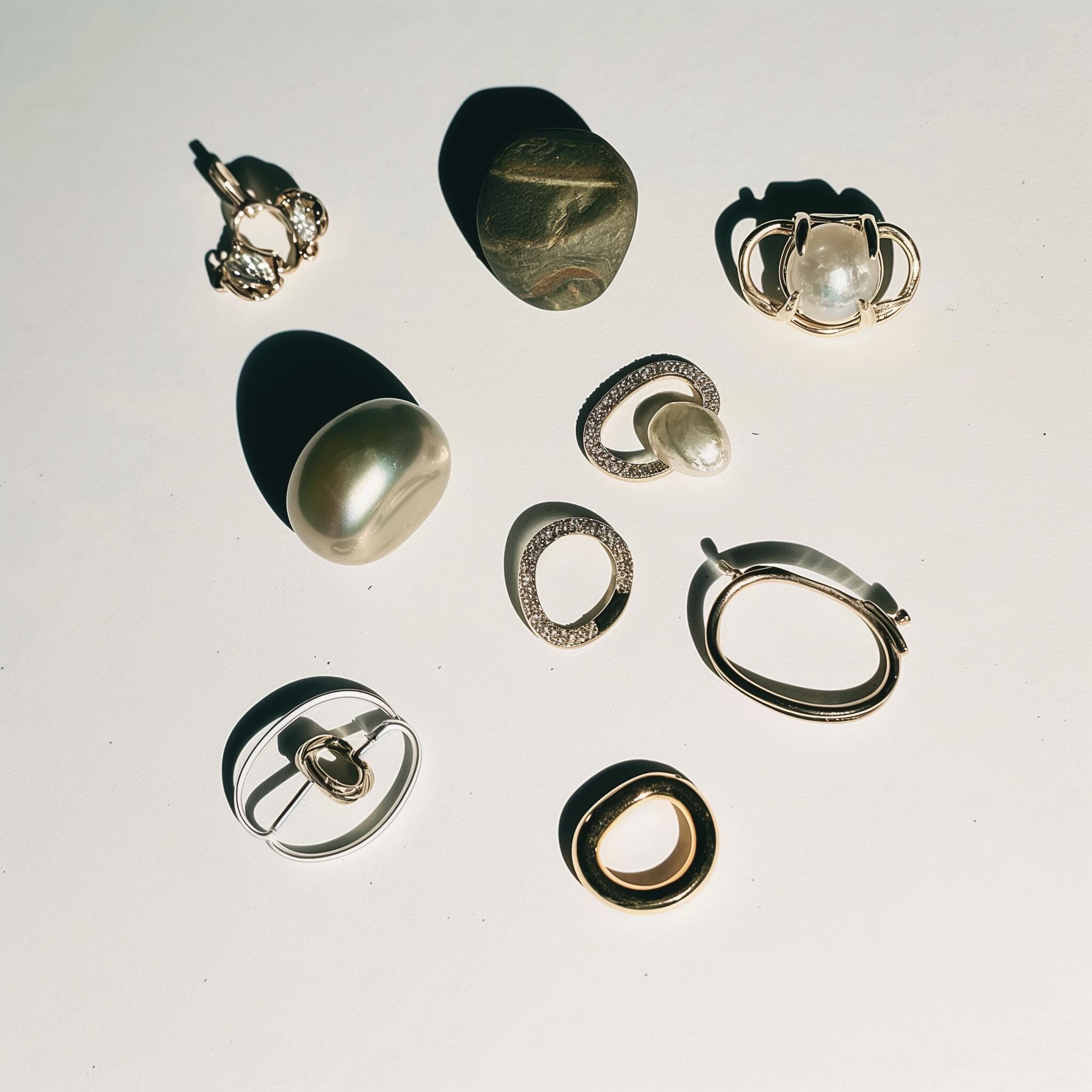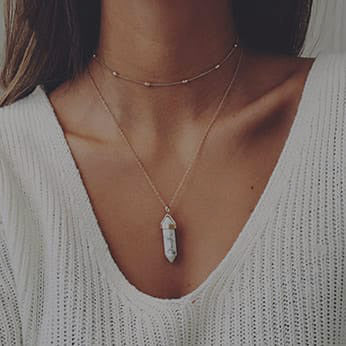Handcrafted Sterling Silver: A Timeless Craft in Eastern Culture
Sterling silver jewelry has been treasured across Eastern cultures for centuries—not only as a beautiful adornment but also as a symbol of craftsmanship, tradition, and spiritual meaning. At Mabge shop, our handcrafted sterling silver pieces honor this rich heritage by combining time-honored techniques with thoughtful design. In this article, we’ll explore the history of silver in Asia, the meticulous process behind artisan silver work, and how each finished piece carries layers of cultural significance.

A Legacy of Silver Across Asia
Silver’s allure goes back thousands of years in Asia. From the high-altitude workshops of Tibet and Nepal to bustling markets in India and China, sterling silver has been prized for its luminosity, durability, and perceived healing properties. In Tibetan culture, silver is often associated with protection and spiritual balance. Monks and pilgrims alike would carry small, handcrafted silver amulets—believed to ward off negative energy—during long journeys through remote mountain passes.
In India, silver has threaded through history as both currency and ornament. The ancient Indus Valley civilization mined silver and crafted it into ritual vessels and jewelry. Over time, techniques like filigree and granulation became hallmark methods in regions such as Rajasthan and Gujarat. Chinese silverwork, meanwhile, evolved with its own distinct aesthetic, often incorporating intricate repoussé (hammered relief) and engraving to illustrate scenes from folklore or nature.
These varied traditions share a common thread: a deep respect for the metal itself and the artistry required to transform it. Sterling silver jewelry in Eastern culture is never merely decorative—it’s a vessel for stories, beliefs, and community identity.

The Art of Handcrafting Sterling Silver Jewelry
Creating sterling silver pieces by hand is an intensive process that requires skill, patience, and reverence for tradition. At its core, sterling silver is an alloy made of 92.5% pure silver mixed with 7.5% other metals—usually copper—to enhance strength and durability. But it’s the human touch that truly brings silver to life.

-
Design & Symbolism
Every piece begins with a design inspired by cultural motifs. Whether it’s a floral pattern borrowed from Chinese porcelain, the geometric lines of Tibetan mandalas, or the organic forms seen in Indian nature-themed jewelry, these designs carry symbolic weight. Artisans often sketch by hand, ensuring that each detail—no matter how small—aligns with the intended meaning. -
Melting & Pouring
Once a design is finalized, the artisan melts recycled silver into a mold or ingot. This stage requires precise temperature control: too low, and the alloy won’t flow; too high, and the metal’s purity can be compromised. By carefully monitoring heat, the smith ensures that the sterling silver maintains its hallmark quality. -
Shaping & Forming
After cooling, the silver is hammered and rolled into sheets or wire. For pieces that feature filigree (delicate wirework), artisans draw sterling silver through progressively smaller holes to create fine threads. These threads are then twisted and soldered onto a silver backing to form lace-like patterns. Repoussé and chasing techniques are used to create raised relief by hammering the silver from the back (repoussé) or adding detail from the front (chasing). -
Engraving & Inlay
Engraving chisel lines into the silver can depict floral vines, auspicious symbols like the lotus or endless knot, or scenes drawn from Buddhist lore. In some regions—particularly in parts of Tibet and Nepal—artisans also inlay gemstones such as turquoise, coral, and lapis lazuli into the silver framework. These stones add color, texture, and additional symbolism (e.g., turquoise for protection, coral for harmony). -
Polishing & Finishing
Finally, each piece is carefully polished to achieve a soft sheen that catches the light but doesn’t overpower the intricate details. Some jewelry retains a slight “antiqued” finish—darkened crevices highlight patterns and lend a sense of age—while others are buffed to a bright luster. In every case, the finishing stage is essential to reveal the depth and craftsmanship of the artisan’s work.
Because each step is executed by hand, no two pieces are ever exactly alike. These slight variations—the subtle hammer marks, the uniqueness of hand-drawn patterns—are what make handcrafted sterling silver jewelry so special. They tell the story of the artisan’s dedication, skill, and connection to tradition.
Artisans’ Dedication: Crafting Cultural Heritage
Behind every handcrafted sterling silver necklace, bracelet, or ring is an artisan who has often spent years mastering their craft. In many rural mountain villages of Tibet and Nepal, silversmith families pass down techniques from generation to generation. Apprentices begin as children, learning how to read symbols, wield tools, and develop an intuitive feel for the metal.
In regions of India like Jaipur and Varanasi, silversmiths often work within small workshops that blend old-world traditions with contemporary demand. These artisans collect scrap silver (sometimes melted from heirloom coins or broken jewelry) and transform it into wearable art. Their workshop spaces are filled with simple yet precise tools: chisels, hammers of various weights, rolling mills, and small burners for soldering.
Visiting these workshops, one can witness the rhythm of metal shaping—hammers tapping in measured beats, the gentle glow of molten silver, and careful chiseling that etches stories into metal. This dedication to preserving and evolving traditional craftsmanship imbues every sterling silver piece with cultural resonance.
Sterling Silver Jewelry at Mabge shop
At Mabge shop, we honor these Eastern silver traditions by curating a collection of handcrafted sterling silver jewelry that showcases the best of artisanal skill and cultural heritage. From Tibetan silver cuff bracelets etched with protective symbols to Tibetan Buddhist Mandala Dzi Silver Ring that whisper centuries of history, each piece is chosen for its authenticity and artistry.
-
Quality & Authenticity: We partner with master silversmiths who use 92.5% sterling silver and ethically sourced gemstones, ensuring each item meets strict standards for purity and craftsmanship.
-
Cultural Storytelling: Every design carries a narrative—whether it’s a lotus motif representing purity, an endless knot symbolizing unity, or a Himalayan-inspired pattern signifying spiritual ascent. These stories are shared alongside each product, inviting wearers to connect deeply with their jewelry.
-
Sustainable Practices: Many artisans utilize recycled silver or collect scrap metal for smelting, reducing environmental impact while breathing new life into treasured materials.
By wearing a handcrafted sterling silver piece from Mabge shop, you’re not just accessorizing—you’re participating in a living tradition that spans continents and generations. Each necklace, ring, or bracelet is a testament to skilled artisans who have devoted their lives to preserving cultural narratives through metalwork.
Embracing Timeless Craftsmanship
In a world increasingly driven by mass production, handcrafted sterling silver jewelry stands as a reminder of the beauty that arises when human hands work in harmony with tradition and nature. At Mabge shop, we believe that these pieces—rich in history and cultural meaning—can inspire modern wearers to pause, reflect, and appreciate the artistry behind every delicate swirl of silver wire and every engraved symbol.
Whether you’re drawn to a Tibetan silver pendant for its protective symbolism or an Tibetan silver ring for its timeless elegance, each item in our collection offers a tangible connection to Eastern culture. Embrace the enduring legacy of artisan silver craftsmanship and let your jewelry tell a story that transcends time.









































































































